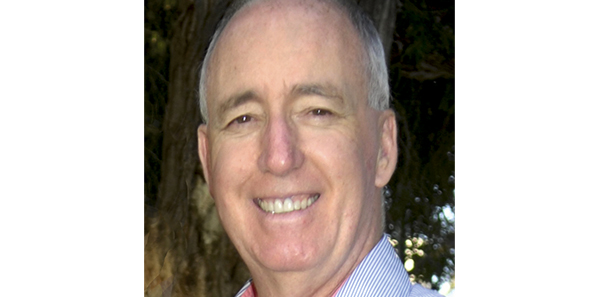1:30min

Stephen Leslie
______________________________
By Rhiannon Riches
Assistant Editor
Stephen Leslie will discuss identifying the underlying cause of sixth nerve palsy, at SA Blue Sky Congress in November.
The two-day congress organised by Optometry South Australia has dual education streams; one each for optometrists and dispensers, with some joint sessions and a trade exhibition.
Mr Leslie’s presentation on neurological science is part of the optometry education program.
‘Optometrists may have a young or more commonly, elderly patient presenting with sudden onset horizontal double vision. This is often due to an abducens, or sixth, nerve palsy, with a range of possible aetiologies, commonly vasculopathy or head trauma, but signs and symptoms of an intracranial mass or raised intracranial pressure should be ruled out. In many cases no obvious cause is determined,’ Mr Leslie said.
‘Optometrists should be familiar with the signs and symptoms of abducens nerve palsy, the questions to ask to essentially rule out serious neurological issues, and the tests to perform, as well as whether referral is necessary urgently, within a reasonable time, or whether optometric management is indicated,’ he said.
‘Horizontal diplopia can occur late in life for non-pathological reasons, and optometrists can test for and manage or comanage many of these cases, especially where the diplopia is age-related only, saving unnecessary worry and expense.’
Case report
Mr Leslie provided the following case report, which is not part of his presentation at SA Blue Sky.
M is a 65-year-old male who experienced sudden onset horizontal diplopia of one week duration. His medical history included hypertension and cholesterol problems but he denied diabetes and heart issues. Extensive questioning and testing indicated no history of head trauma, and no signs or symptoms of neurological company.
His ocular health assessment was normal, and he had corrected distance visual acuities of R 6/7.5, L 6/7.5. He had a left abduction deficit beyond 10-20 degrees nasal in primary gaze although all other eye movements were normal, with horizontal diplopia on all left gaze beyond approximately 20 degrees nasal, and normal convergence.
His horizontal diplopia was greater at distance than near. Cover testing with prism neutralisation indicated a 35 prism dioptre left esotropia in primary gaze with head straight, with prism neutralisation providing single vision. I fitted a 35 prism dioptre base out Fresnel lens to his current glasses on the left lens which produced single vision.
He was advised his double vision was most likely due to a sixth nerve palsy caused by a small blood vessel issue related to his hypertension and cholesterol issues, and was referred to his GP for comprehensive assessment including blood tests, which resulted in a presumed vasculopathic aetiology, with no need for further investigation.
Mr Leslie will also give a presentation on normal or pathological raised optic nerves, a topic that has been requested by members.
Identify cancers
International speaker Dr Blair Lonsberry will deliver a series of presentations to optometrists and dispensers at Blue Sky. Identifying cancers is the topic of one of his presentations to optometrists.
‘A crucial aspect of an optometrist’s health assessment of a patient is the screening for conditions that may cause sight or life threatening consequences. In the presentation ‘Don’t miss that cancer (inside and out)’ the key characteristics of benign versus malignant lesions will be discussed, including the identification of the most common malignant lesions that optometrists are likely to encounter,’ Dr Lonsberry said.
‘Special emphasis will be placed on the identification of melanomas, on the ocular adnexa and in detail regarding the identification of choroidal melanomas which have a high mortality rate if not diagnosed early,’ he said.
Dr Lonsberry’s presentation on diagnosing cancers is accredited with three therapeutic CPD points.
Other topics accredited with three therapeutic CPD points include:
- Imaging interpretation
- Clinical ocular grand rounds
- New concepts in ocular surface disease
- Ocular emergencies and urgencies
- OCT angiography
SA Blue Sky will incorporate a trade hall with 29 exhibitors offering products and services including diagnostic equipment, frames, lenses and optical support.
SA Blue Sky Congress, 25-26 November, Adelaide Hills Convention Centre, 40 CPD (25T)
Information
Register
Conference tutors dispensers to handle emergencies
More CPD points at CCLSA dinner and masterclass
Registration is open for the Cornea and Contact Lens Society of Australia’s dinner and masterclass immediately following SA Blue Sky congress.
An informal dinner will take place on 26 November at the Adelaide Hills Convention Centre, the venue at which SA Blue Sky will be held. Keynote speaker Professor Helen Swarbrick will address delegates at the dinner.
A full-day cornea and contact lens masterclass will take place on 27 November with a program covering topics and tips to apply in practice. Speaking at the masterclass will be David Stephensen, Jessica Chi, Luke Arundel, Dr Laura Downie, Professor Helen Swarbrick and Dr Aanchual Gupta.
Topics include:
- An experts’ guide to increasing the percentage of contact lens wearers in your practice
- Perspectives on applications of contact lenses for myopia control, prosthesis, dry eye management, ocular surface disease
- Identifying dry eye and functional treatment strategies
- Secrets of the edge design of RGP contact lenses
- Managing acute contact lens complications
- The experts’ secrets of orthokeratology, miniscleral contact lenses, soft toric contact lenses and multifocal contact lenses.
The CCLSA masterclass offers up to 21 (4.5T) CPD points.